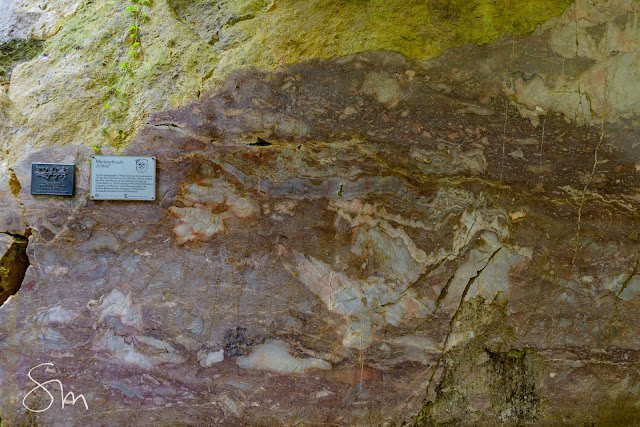One of the cupolas that I wrote about in the last post sits on Berlin's own Cathedral, the "Berliner Dom" on Museumisland. Built towards the end of the 19th century at the site of an earlier protestant church, it has a generous, slightly ostentatious Wilhelminian architecture.
A curious architectural geological detail: the dark red marble columns on both sides of the altar and in the vestibule are made from Hessian "Lahn"-Marble.
This wildly marbled colourful red stone was quite sought after and in fashion at the beginning of the 20th century. It comes from a quarry close to Frankfurt, in Villmar on the river Lahn. It has been used extensively for the Empire State Building's entrance hall in New York, where 723 tons of raw material were shipped down the Lahn to the Rhine and over the Atlantic. It has also been used for a Moscow metro station and the Kremlin, it can be found in the Eremitage St. Petersburg and in an Indian Maharadjas palace in Tagore. I visited the quarry in Villmar, which has been turned into a museum recently: the stone is out of fashion nowadays, too wildly marbled (and probably too expensive to harvest).
the UNICA-quarry, Villmar, Hessen: a small section has been polished
Back to the church, one can climb up the stairs to the dome and unto the roof with a view over the "Lustgarten" and Berlin.
... Wilhelminian times ...
illuminated for Berlin's Light Festival
"Wings"













No comments:
Post a Comment